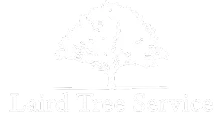Frequently Asked Questions
Answers to Common Tree Service Questions
Any leaning tree is hazardous and should be evaluated as soon as it's noticed for removal. Some leaning trees can be saved or may not have to be cut down. The damage to the root system, size and location of the tree will play a role in answering this question as every situation is different.
Having your trees regularly pruned/trimmed can stimulate new growth, remove dead or hazardous limbs, keep your canopy balanced and increase the curb appeal of your property.
A knowledgeable arborist can help you walk you through the process. Some signs it may be time to remove a tree are: lots of dead limbs in the upper canopy, large wounds or holes through the trunk of limbs, leaning or uprooted trunks or if a tree has grown too big for its space (i.e. damaging concrete, foundations or roof damage).
Move personal vehicles away from the work zone, clean up after any pets, move childrens' toys and flower pots or other decorative yard ornaments. Make sure all gates are unlocked to the work area and let your neighbors you will be having work done on the appointment date so they can prepare for changes in traffic flow.
No, we used the latest equipment in the tree care industry to minimize our footprint on your landscape. In addition to our lightweight equipment we also take steps to protect your sprinkler system and underground utilities.
In most cases a crane is not necessary for tree removal. There are always options for trees in difficult or tight spots without using a crane. Every job site set up is different; for this reason we will walk you through the process before any work begins to insure you understand how the work will be performed.



